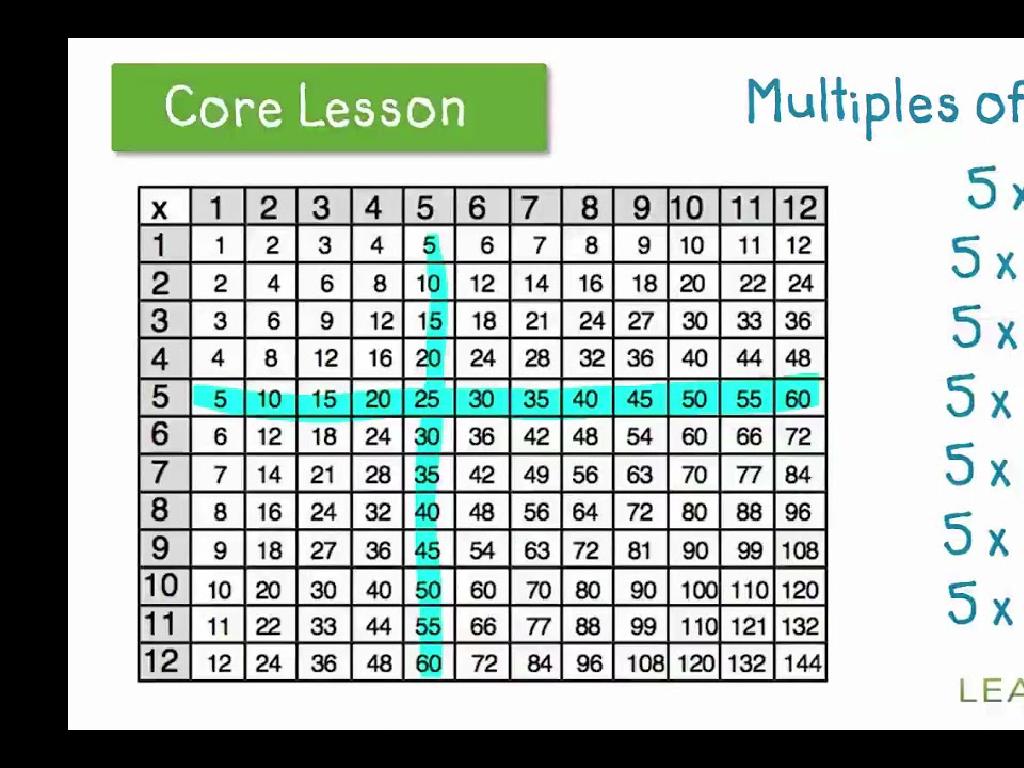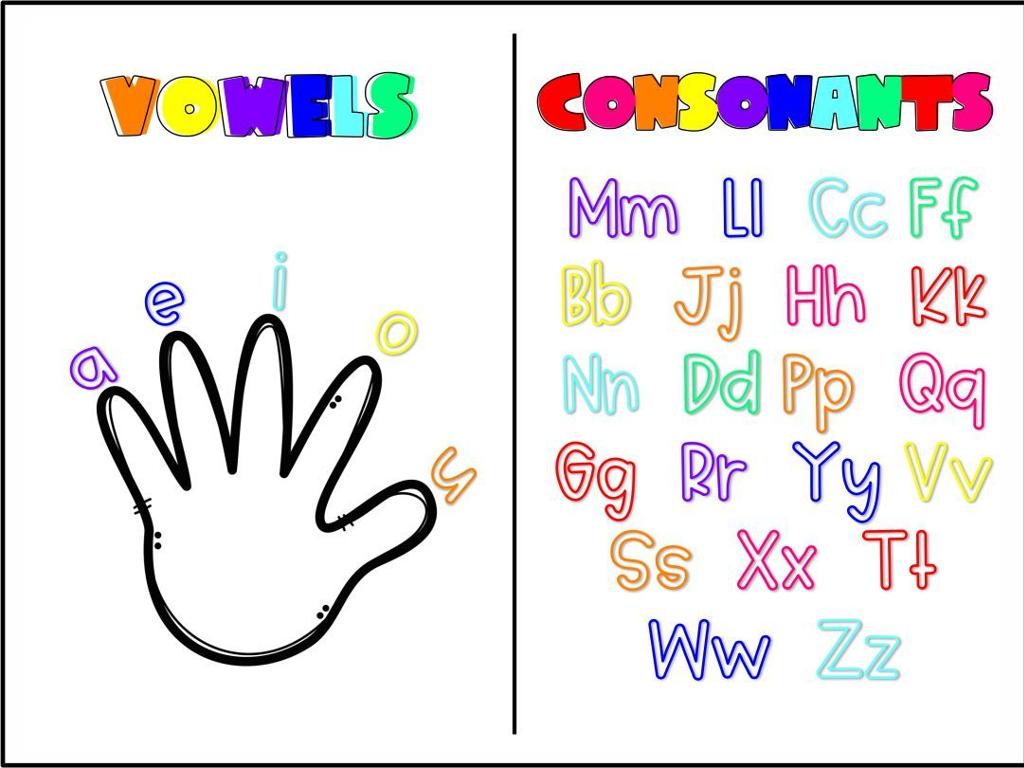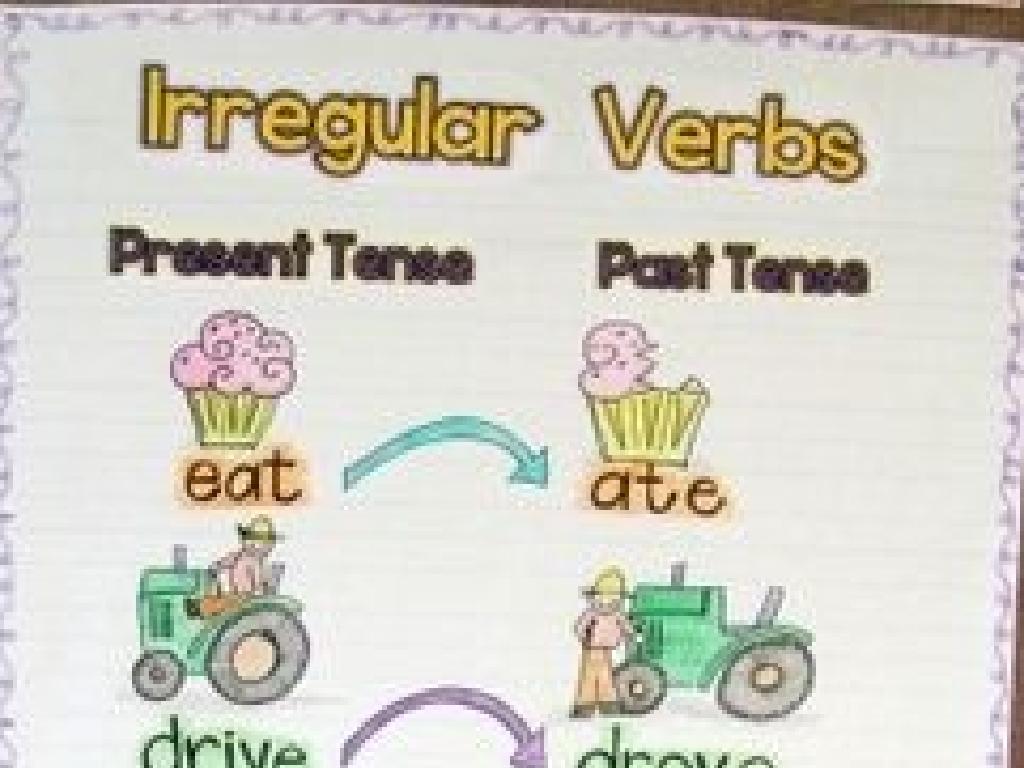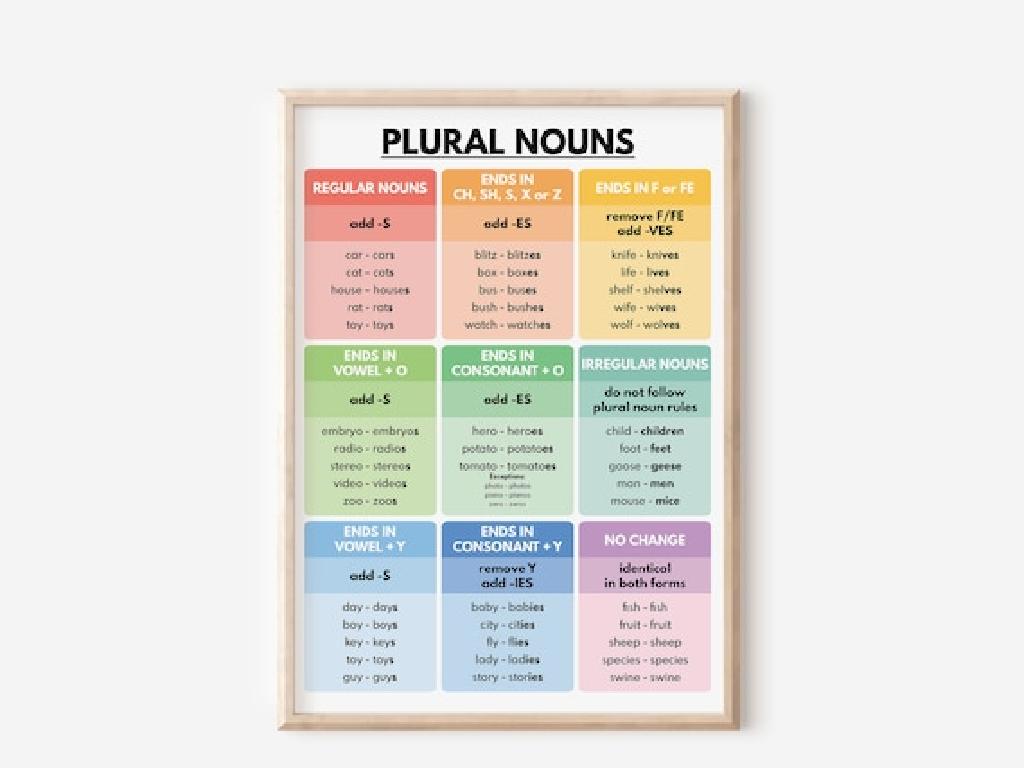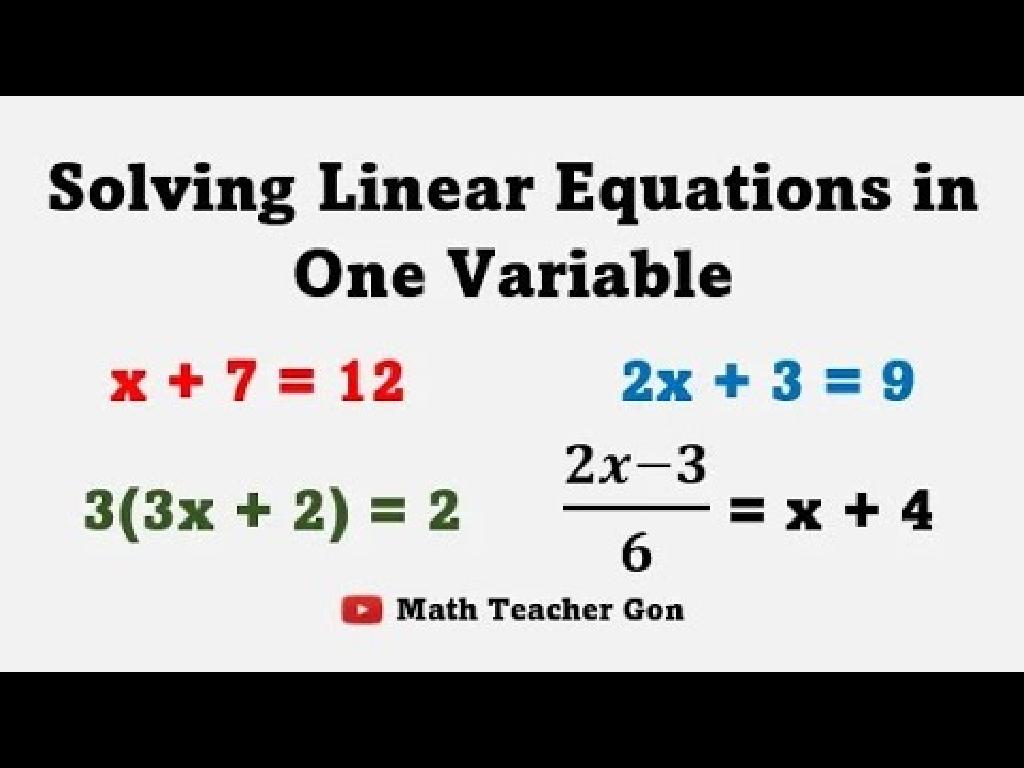Factor Variable Expressions: Area Models
Subject: Math
Grade: Sixth grade
Topic: Equivalent Expressions
Please LOG IN to download the presentation. Access is available to registered users only.
View More Content
Factor Variable Expressions: Area Models
– Algebra’s language basics
– Algebra uses symbols for numbers and operations
– Defining equivalent expressions
– Expressions with the same value, even if they look different
– Area models for factoring
– Visual method to understand multiplication of expressions
– Practice with expressions
|
This slide introduces students to the concept of factoring variable expressions using area models within the broader topic of equivalent expressions. Begin by explaining the basic language of algebra, which includes variables, constants, and operations. Clarify that equivalent expressions are different expressions that represent the same value. Then, focus on area models as a visual tool to help students understand the process of factoring expressions. Area models can break down expressions into simpler parts, making it easier to see how they are equivalent. Encourage students to practice creating area models for different expressions to solidify their understanding. Provide examples and be ready to assist students as they work through practice problems.
Understanding Factoring in Algebra
– Factoring: Simplifying expressions
– Break down complex expressions into products of simpler factors.
– Factoring vs. Number splitting
– Just like 12 = 3 x 4, expressions can be split into factors.
– Factoring numerical expressions
– Example: 6x^2 + 9x = 3x(2x + 3).
– Factoring’s role in algebra
– Helps solve equations, simplify expressions, and find zeroes.
|
This slide introduces the concept of factoring in the context of algebra, drawing parallels to the familiar process of finding factors of numbers. Factoring is a key skill in algebra that involves breaking down more complex expressions into a product of simpler ones. It’s similar to how we might split a number like 12 into 3 and 4. Provide examples of factoring numerical expressions to illustrate the concept. Emphasize the importance of factoring in various areas of algebra, including solving equations and simplifying expressions. Encourage students to practice factoring with different expressions to become comfortable with the process.
Introduction to Area Models
– Visualize multiplication via area
– Imagine a rectangle’s area as groups of tiles
– Area models show products
– Each tile represents a unit; the total area is the product
– Connect area models to algebra
– Area models help understand variable expressions
– Practice with different expressions
|
Begin by explaining that area models are a visual tool for understanding multiplication. Show how multiplying length by width of a rectangle can represent the concept of area. Illustrate how this method can be used to represent products, especially when dealing with variable expressions in algebra. Emphasize the connection between the concrete visual model and the abstract algebraic expressions. Provide examples with numerical and variable expressions for students to practice visualizing and calculating area. Encourage students to draw their own area models for different expressions to solidify their understanding.
Factoring Variable Expressions Using Area Models
– Variables and area models
– Area models represent expressions visually
– Factoring single variable expressions
– Break down expressions into factors
– Example: Factor x^2 + 5x + 6
– x^2 + 5x + 6 = (x + 2)(x + 3)
– Visualizing factors with rectangles
– Draw rectangles to represent products
|
This slide introduces students to the concept of factoring expressions using area models. Start by explaining how variables can be represented in area models, which helps in visualizing the concept of factoring. Then, demonstrate the process of factoring expressions with one variable, using x^2 + 5x + 6 as an example. Show how to break down the expression into factors (x + 2) and (x + 3) and how these factors can be represented as the length and width of a rectangle in an area model. Encourage students to draw their own area models to represent the factors of given expressions. This visual approach aids in understanding the multiplication of binomials and the concept of equivalent expressions.
Factoring Expressions: Practice Time
– Factor x^2 + 7x + 10
– Break into (x + 5)(x + 2)
– Factor x^2 + 3x – 4
– Break into (x + 4)(x – 1)
|
This slide is designed for practice in factoring quadratic expressions using area models. Start by reminding students of the area model method where the product of the length and width of a rectangle represents the quadratic expression. For the first example, guide them to find two numbers that multiply to 10 and add to 7, which are 5 and 2. Therefore, the factored form is (x + 5)(x + 2). For the second example, they need to find two numbers that multiply to -4 and add to 3, which are 4 and -1, resulting in (x + 4)(x – 1). Encourage students to work through these problems on their own, using area models to visualize the factors. After attempting the problems, discuss the solutions as a class to ensure understanding.
Class Activity: Create Your Own Area Model
– Factor the expression x^2 + 9x + 14
– Draw an area model on paper
– Use squares/rectangles to represent terms
– Share and explain your model
– Partner feedback helps understanding
– Discuss the factoring process
– Reflect on how area models visualize expressions
|
This activity is designed to help students understand the concept of factoring expressions using area models. By drawing an area model, students can visualize how the terms of the expression x^2 + 9x + 14 can be represented as the length and width of rectangles. This hands-on activity encourages collaboration as students will share their models with a partner, explaining their thought process and discussing any challenges they faced. As a teacher, facilitate the activity by providing guidance on drawing area models and encourage students to think about how each term in the expression contributes to the overall area. Possible variations of the activity could include factoring different expressions, working in small groups, or using manipulatives to build the area models.
Review and Reflect: Factoring with Area Models
– Key points on variable expression factoring
Factoring breaks expressions into simpler, multiplied parts, e.g., 3x(x+4).
– Area models’ role in understanding
Visualizing how factors multiply to form areas aids comprehension.
– Real-world application of factoring
Factoring can solve problems in fields like architecture and economics.
– Reflect on our factoring journey
|
This slide aims to consolidate the students’ understanding of factoring variable expressions using area models. It’s crucial to emphasize the importance of breaking down expressions into simpler parts, which can make complex algebraic problems more manageable. Area models provide a visual representation that helps students grasp the multiplication of factors. Discussing real-world applications, such as calculating areas in architecture or understanding growth in economics, shows the practical value of factoring. Encourage students to reflect on their progress and understanding of the concept, fostering a deeper connection with the material.
Homework: Factoring with Area Models
– Practice factoring expressions
– Use area models to factor expressions
– Complete the worksheet
– Worksheet has problems to solve
– Note down any questions
– Write questions about any difficulties
– Review for next class
|
This homework assignment is designed to reinforce the concept of factoring expressions using area models, which is a visual method of understanding equivalent expressions. The provided worksheet contains a variety of problems that will help students practice this technique. Encourage students to attempt all problems and write down any questions or difficulties they encounter. These questions will be addressed in the next class to ensure a thorough understanding of the topic. Remind students that practicing with area models will aid in visualizing the distribution of terms within an algebraic expression, which is a key skill in algebra.

